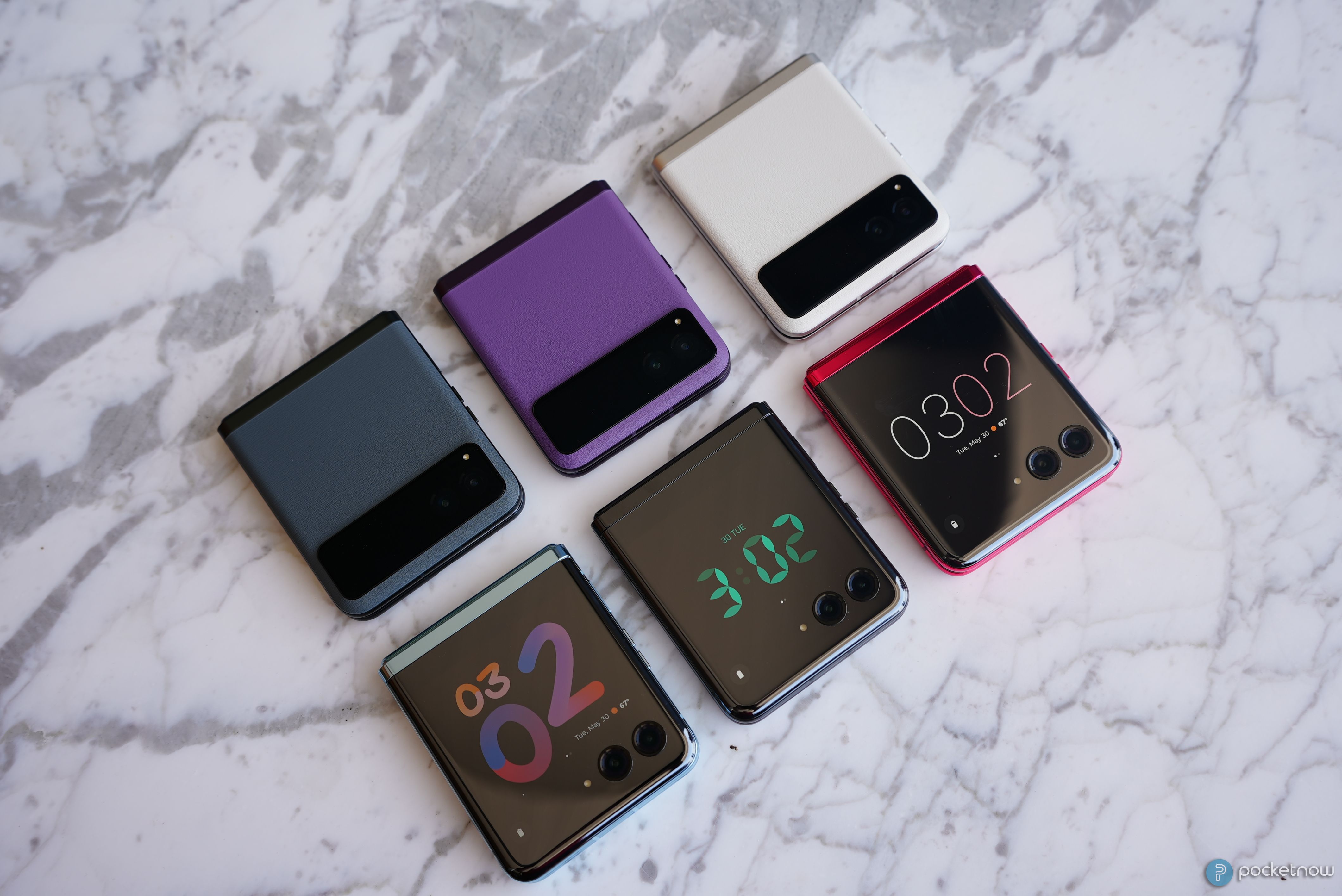The Motorola Razr lineup kicked off a flip phone frenzy in the past, and when it reintroduced the name in 2019 for its folding phone offering, it set lofty expectations. But a high entry price took away much of the steam that Motorola generated, and the next few iterations — one of which didn’t even make it to the United States — weren’t all too impressive.
Though in 2023, Motorola is moving in the right direction with two new Razr models set to launch, a standard Moto Razr and the Moto Razr+ with an expansive 3.6-inch outer display. Here we will look at what these devices have to offer in their attempt to challenge the dominance of their rivals.
POCKETNOW VIDEO OF THE DAYSCROLL TO CONTINUE WITH CONTENT
Motorola Razr+ (2023)
The highlight of Motorola’s brand new foldables is the $1000 Moto Razr+, also known as the “Razr 40 Ultra” in some regions. The device is entering the market at the same retail price as the Samsung Galaxy Z Flip 4 and packs impressive hardware.
As mentioned earlier, a 3.6-inch display using a pOLED panel is on the outside. Its square 1:1 aspect ratio means the entire front is covered by a screen, giving you much more room to use the device, with the camera lenses playing a little interference.
In addition, what’s impressive is that the panel refreshes at 144Hz and has a peak brightness of 1,100 nits. So you’ll never really feel it’s lacking in certain aspects. Also, it’s protected by Gorilla Glass Victus.
Gorilla Glass Victus is also used on the back panel of the Infinite Black and Glacier Blue colors. The Viva Magenta option features a vegan leather back panel.
You can then unfold the device to reveal a massive 6.9-inch pOLED display with an FHD+ resolution (2640 x 1080), 165Hz refresh rate, and a peak brightness of 1,400 nits. It even uses LTPO technology, and covers 120% of the DCI-P3 color gamut.
As for internals, to keep costs down, Motorola has chosen to ship the device with Qualcomm’s Snapdragon 8+ Gen 1 processor with 8 GB of RAM and 256 GB of UFS 3.1 storage. And there’s a 3,800 mAh battery with support for 30W wired fast charging and 5W wireless charging.
Having launched in May 2022, the 8+ Gen 1 is now placing itself as an affordable yet capable processor and is also confirmed to appear on the Nothing Phone 2 in 2023. We don’t disagree with Motorola’s decision to use an older flagship processor if it allows its device to be more competitive.
If you’re a mobile photographer, the camera hardware here also seems capable, though it’ll be up to the release software that’ll help us form a good opinion. Nevertheless, the primary “rear” camera shooters are a 12-megapixel wide lens with f/1.5 aperture and a 13-megapixel ultrawide with f/2.2 aperture. The front camera on the inner display is a 32-megapixel unit with f/2.4 aperture.
Overall, the Razr+ is a great option to consider, and we can’t wait to see how it fares in the hands of users in 2023.
Motorola Razr (2023)
Now, if the Razr+ and its $1000 price tag are too steep for you, another affordable option will make its way to the market in 2023, and that’s the standard Razr.
Unfortunately, Motorola hasn’t unveiled any pricing yet, but expect it to be competitive. The $1000 tag on the flagship Razr+ is already quite a value-for-money device for being a flagship folding phone, and the Razr is likely to continue the trend with an even more aggressive price.
Both Razr and Razr+ come with an IP52 rating, which Motorola says is water-repellent.
As for hardware, the Razr does differ in some key ways. First up is the front display, which is only 1.6 inches on this phone. It still uses OLED technology, has a peak brightness of 1000 nits, and has Gorilla Glass Victus protection, but it only has a 60Hz refresh rate. Though, the last point is a non-issue on a screen this small.
Flip open the device, and you’ll see a similar 6.9-inch FHD+ (2640 x 1080) pOLED panel with 1,400 nits peak brightness, but the refresh rate is a little lower at 144Hz. Motorola says the display covers the 10-bit DCI-P3 gamut but didn’t state a percentage.
Coming to internals, the device is powered by the Qualcomm Snapdragon 7 Gen 1 and has 8 GB of RAM and 128 GB of UFS 2.2 storage. Surprisingly, Motorola has made this device thicker to house a 4,200 mAh cell, improving performance. The standard 30W fast wired and 5W wireless charging systems help power the device.
The camera hardware on the Razr is also impressive. There’s a 64-megapixel main shooter with f/1.7 aperture, OIS, and an ambient light sensor. As for the secondary, it’s a 13-megapixel ultra-wide with a f/2.2 aperture and 120-degree field of view.
The 2023 Motorola Razr lineup is impressive!
With its 2023 lineup, Motorola has a seemingly balanced price and device performance. The Moto Razr+ is a package that one can’t ignore for $1000 — something we could easily do for past models — and there’s a lot of great hardware to be had! As for the Moto Razr, its price is bound to bridge a significant gap in the foldable device market since the first Razr launched in 2019.
The current competition for Motorola Razr
Samsung Galaxy Z Flip 4 The latest Samsung Galaxy Z Flip 4 comes with a 6.7-inch AMOLED foldable display, a 1.9-inch cover screen, Qualcomm Snapdragon 8 Plus Gen 1 processor, dual-12MP cameras, and much more. Oppo Find N2 Flip OPPO Find N2 is the latest Samsung Galaxy Z Flip 4 competitor on the market. It features a big 3.26-inch cover display, a large 6.8-inch main display, dual-camera setup with a 50MP primary camera, a 4,300 mAh battery with support for 44W USB-C charging, and more.


